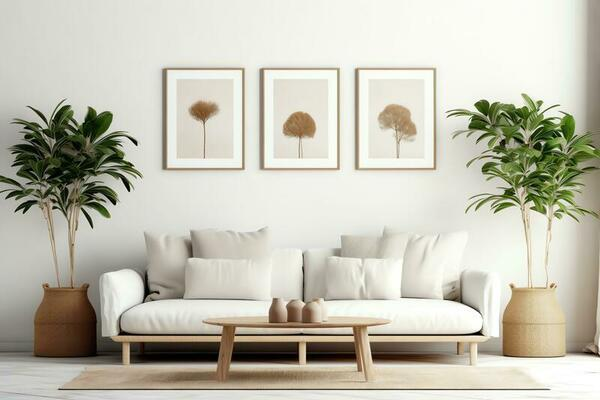“Colour is the most primitive form of language, and it can speak to us on a visceral level”
-Verna Blau
Creating a room which is both functional and aesthetic must be at the heart of architectural design. But there’s a second element that interior design doesn’t often give much attention to: colour psychology. It’s the colour we select at home that can have a major impact on our mood, energy levels and general sense of wellbeing. We’re going to talk about the power of colour psychology when it comes to interior design this blog. Let’s discuss the different colours that can be applied for creating various effects, giving you some good tips on how to use colour well in your home.

● Understanding Colour Psychology
The study of colour psychology is about how our moods and behaviours are influenced by different colours. This is a relatively new area of research and it has already been shown to have an important impact on our lives. For example, energy and excitement can sometimes be associated with warm colours such as red, orange or yellow. Calmness and relaxation are frequently associated with cold colours such as Blue, Green or Purple. Colour psychology has a profound influence on our education environment, even in commercial and private settings. Studies have shown that certain colours are beneficial for attention, creativity and education outcomes in students.
Exposure to green, for example, was shown to improve concentration and reading comprehension while exposure to warm colours such as orange could boost energy levels and encourage active participation. We can expect more profound insights about the subtle but strong impact of colour on emotions, behaviour and overall wellbeing as research progresses in colour psychology. Colour psychology has an impact that goes beyond personal experiences, affecting a number of aspects of our lives, including education, health care and marketing.
The selection of colours has a crucial role to play when it comes to creating an adequate learning environment for schools. Studies have shown that exposure to green can enhance concentration, improve comprehension of reading and reduce anxiety. On the contrary, it has been demonstrated that painting classrooms in warm colours such as orange increases energy levels, encouraging active participation and stimulating creativity. The importance of colour psychology in health care settings, where special colours can be employed to promote healing and well living is also important. To invoke special emotions and associations, companies have been carefully selecting the colours in their branding, packaging or marketing materials. We are likely to have even deeper insight about how colours affect our emotions, behaviour and overall wellbeing as the research in colour psychology advances.

● Use of Colour Psychology in Interior Design
It is important to take into account the general mood that you wish to create when using colours in your home. You may choose to use cool colours like blue or green, so that your room can be calm and relaxed. You can use hot colours such as Red or Orange if you want to give this room more energy and excitement. When selecting the colour, you need to take into consideration the function of the room. If you’re planning to paint a bathroom, such as blue or lavender, it might be better to select colours that are soothing and relaxing. You may wish to select colours that give you more excitement, like Red or Orange, when painting your living room. You should also take into account the amount of natural light that is provided by the room when deciding on its overall mood. You might be able to use darker colours if your room gets a lot of natural light. But if there’s not much natural light in a room, it may be appropriate to use soft colours so that the space feels wider and more spacious. The function of the room should also be taken into consideration when choosing a colour, in addition to overall mood. Colours that are easy to clean and maintain, for example, may be useful in kitchens and bathrooms. Lighter colours and brighter colours that have a higher sheen may be included. In the area of interior design, these are general guidelines on how to use colour psychology:
1. To create an interest and avoid making the room feel like it’s too dreary or boring, use a variety of colours.
2. To add a sense of intimacy and comfort in the little spaces, paint them with dark colours.
3. In large spaces, use light colours to enhance their openness and ease of movement.
4. In order to enhance the attractiveness and comfort of a room, use warm colours.
5. To make the room feel more peaceful and relaxing, use cool colours.

● The Psychology of Different Colours
1. Red: Red’s the stimulating colour that increases our heart rate and blood pressure. You often use it for creating a sense of urgency or excitement. It is use in making a powerful tool for capturing attention and driving action.
2. Orange: The orange is a warm and inviting colour that can make a room feel more cheerful and energetic. It’s often used to create a sense of fun and playfulness. It’s a bright colour that excites the soul, encourages creativity, sociability and an enthusiasm for life.
3. Yellow: Yellow’s a bright and optimistic colour that helps to make the space seem brighter and clearer. A sense of happiness and joy is frequently obtained from it. A feeling of cheerfulness, enthusiasm, and energy is stimulated by yellow’s bright warmth and sunshine like colour, which makes you feel optimistic and hopeful.
4. Green: The green colour is a calming, relaxing colour that will make the space more comfortable and peaceful. This is often used as a means of creating an illusion of harmony and balance.
5. Blue: Blue’s a soothing and calming colour that can make your space seem more calm and peaceful. It provides a sense of security and trust in many cases.
6. Purple: The purple colour is a mysterious and sophisticated colour that can make the space seem more elegant and luxurious. Purple, for example, appears to be a secret and sophisticated colour that could make the space seem more refined and beautiful.
7. Pink: The pink, which can make the room seem more gentle and subtle, is romantic and feminine. A sense of love, affection and tenderness, creating an ambiance of warmth and compassion.
8. Brown: Brown’s a warm, calm colour that can make your space feel more comfortable and inviting. In order to achieve a sense of stability and safety, it is frequently used.
9. White: White’s a clean, fresh colour that can make a room feel more spacious and airy. They can often be applied to create the feeling of minimalism and simplicity. White is capable of creating a soothing and stimulating atmosphere which both calms and revitalizes.
10. Black: Black’s a sophisticated and dramatic colour that can make a room feel more elegant and luxurious. They’re frequently used for creating a sense of mystery and intrigue.
● Other Factors to Consider:
Adding to the colour itself, other factors can also be taken into account when considering colour psychology for interior design in London. These factors include:
1. The level of colour: a small amount of bright colour can have profound effects, while a large quantity of muted colours is very calming.
2. The colour’s intensity: vibrant and vivid colours can stimulate and excite, while the muted or pastel ones might calm and soothe.
3. The combination of colours: There are a variety of colours that can be combined and created various effects. A feeling of balance can arise, for example, when using warmer and cooler colours in combination.
4. The character of a space: the colours that you choose should take into account the character of the space. For instance, the palette of colours in a brightly coloured living room could be different from calm and soothing sleeping quarters.
In order to make your house more comfortable and inviting, Oraanj Interior Design believes colour psychology can be a powerful tool. Knowing how our emotions are affected by different colours can give us a clear idea of which colours we need to select for the house. Hopefully you’ve inspired your own use of colour psychology in the house with this blog post. You can make a space that makes you feel good to be in, just by being creative. In order to develop a wide range of mood and environment, colour psychology is an excellent tool. Beyond the basic division of warm and cool colours, each individual hue has its own unique set of associations. It could be easy to incorporate colour psychology in your interior décor, as long as you add a touch of colour by means of decorative pieces, paintings or textiles.
Consider paint all walls in colours that are consistent with the mood or atmosphere you want, to create a more powerful effect. Remember, the most important thing is to experiment and find out what works best for you and your family.
Author: Utkarsha Adokar (Interior Designer)


